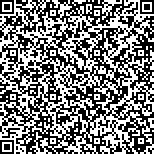| 引用本文: | 刘海平,叶少文,杨雪峰,张良松,张惠娟,范丽卿,李钟杰.西藏尼洋河水生生物群落时空动态及与环境因子关系:4.浮游动物.湖泊科学,2016,28(2):370-378. DOI:10.18307/2016.0217 |
| LIU Haiping,YE Shaowen,YANG Xuefeng,ZHANG Liangsong,ZHANG Huijuan,FAN Liqing,LI Zhongjie.Spatio-temporal characteristics of aquatic organism community and their relationship to environment in Niyang River, the branch of Yarlung Zangbo River, Tibet:4.Zooplankton. J. Lake Sci.2016,28(2):370-378. DOI:10.18307/2016.0217 |
|
| |
|
|
| 本文已被:浏览 9605次 下载 7277次 |

码上扫一扫! |
|
|
| 西藏尼洋河水生生物群落时空动态及与环境因子关系:4.浮游动物 |
|
刘海平1,2,3, 叶少文2, 杨雪峰4, 张良松5, 张惠娟1, 范丽卿1, 李钟杰2
|
|
1.西藏大学农牧学院, 林芝 860000;2.中国科学院水生生物研究所, 淡水生态与生物技术国家重点实验室, 武汉 430072;3.中国科学院大学, 北京 100049;4.锡林浩特市第六中学, 锡林浩特 026000;5.福建省水产技术推广总站, 福州 350003
|
|
| 摘要: |
| 于2008-2009年按照季节调查西藏地区尼洋河浮游动物群落的组成、丰度和多样性,并运用多元统计方法定量分析浮游动物的空间和季节变化特征及其与主要环境因子之间的关系.结果显示,尼洋河浮游动物包括原生动物、轮虫、枝角类和桡足类,其中原生动物9目13科14属,轮虫1目7科17属,枝角类仅1目1科1属,桡足类2目2科2属. 原生动物以砂壳虫和瞬目虫属为主,轮虫则以橘轮虫属和单趾轮虫属为主.尼洋河浮游动物的物种丰富度和生物量随尼洋河海拔高度不断提升呈现递减的趋势,夏季浮游动物生物量、物种丰富度、总丰度较低,其中夏季浮游动物物种丰富度最低,而浮游动物生物量和总丰度则仅高于冬季.受到水体稳定性的影响,尼洋河浮游动物Shannon-Wiener多样性指数和均匀度指数在交汇处较低;季节方面,夏季最低,冬季次之.尼洋河原生动物和轮虫总丰度在季节方面存在相似的演替规律,即出现2次高峰和2次低谷,2次高峰分别出现在春季和秋季,2次低谷分别出现在夏季和冬季.尼洋河浮游动物沿程变化方面,浮游动物群落4个指标不存在显著差异.尼洋河浮游动物季节变化方面,仅总丰度秋季和冬季之间存在显著差异,其他3个指标在各个季节之间均不存在显著差异.典范对应分析表明,原生动物类群里,砂壳虫属丰度受水体溶解氧浓度的影响较大,前管虫、袋座虫、肾形虫、瞬目虫和斜口虫属丰度受水体矿化度的影响较大,鳞壳虫属丰度则主要与水体中氨氮浓度关联较大;轮虫类群里,单趾轮虫、无柄轮虫、枝胃轮虫、囊足轮虫属丰度与水体的矿化度关联较大,龟甲轮虫属丰度则与总磷浓度有着较大的关联.分类回归树模型预测了尼洋河浮游动物时空分布与主要环境因子之间的定量关系,结果表明尼洋河浮游动物总丰度受到硬度、季节、海拔以及河道底质等因素的影响,Shannon-Wiener多样性指数受到总碱度、季节、硬度和水温的影响,均匀度指数受到总碱度、总磷浓度和水温的影响.这些关键环境因子对尼洋河水域浮游动物的时空变化有着重要的指示作用,建议加强对浮游动物及这些环境因子的关注,推动尼洋河水域生态环境的可持续发展. |
| 关键词: 西藏 尼洋河 浮游动物 时空动态 主成分分析 典范对应分析 分类回归树 |
| DOI:10.18307/2016.0217 |
| 分类号: |
| 基金项目:西藏科技厅地区基金重点项目、西藏财政厅农业技术推广项目、农业部公益性行业专项(201403012)和国家自然科学基金项目(31560144,31160140)联合资助. |
|
| Spatio-temporal characteristics of aquatic organism community and their relationship to environment in Niyang River, the branch of Yarlung Zangbo River, Tibet:4.Zooplankton |
|
LIU Haiping1,2,3, YE Shaowen2, YANG Xuefeng4, ZHANG Liangsong5, ZHANG Huijuan1, FAN Liqing1, LI Zhongjie2
|
|
1.Agricultural and Animal Husbandry College of Tibet University, Linzhi 860000, P. R. China;2.State Key Laboratory of Freshwater Ecology and Biotechnology, Institute of Hydrobiology, Chinese Academy of Sciences, Wuhan 430072, P. R. China;3.University of Chinese Academy of Sciences, Beijing 100049, P. R. China;4.NO. 6 Middle School Xilinhot, Xilinhot 026000, P. R. China;5.Fujian Marine Products Technical Promotion Station, Fuzhou 350003, P. R. China
|
| Abstract: |
| We investigated the constitution, abundance and diversity of zooplankton in Niyang River, the branch of the Yarlung Zangbo River, Tibet, based on season from 2008 to 2009, and taken quantitative analysis to study spatio-temporal characteristics of zooplankton and their corresponding to environment using multivariate statistics method.The results were as follows.Firstly, zooplankton community in Niyang River included protozoa, rotifera, cladocera and copepoda, and there are 9 orders 13 family 14 genus for protozoa, 1 order 7 families 17 genus for rotifera, 1 order 1 family 1 genu for cladocera, and 2 orders 2 families 2 genus for copepoda.Among them, protozoa is mainly based on Difflugia and Glaucoma, rotifera is mainly based on Rotaria and Monostyla.Secondly, specie richness and biomass for zooplankton in Niyang River are descending with the elevation.Meanwhile, biomass, the specie richness and total abundance of zooplankton in summer are low, especially for specie richness in summer, which is lower than that in other seasons, although biomass and total abundance are a bit higher than that in winter.Influenced by the stability of water in Niyang River, Shannon-Wiener diversity index and Pielou evenness index, which are lowest in summer followed by winter, are lower at the interchange of river.Total abundance of seasonal succession for protozoa and rotifera in Niyang River are similar, that is, there are two climaxes which appear in spring and autumn respectively and two troughs which appear in summer and winter respectively.Thirdly, using Duncan comparison method to judge the difference among sampling sites and seasons for specie richness, total abundance, Shannon-Wiener diversity index and Pielou evenness index, there is no significant difference among four sampling sites for four indices mentioned above.As for seasons, significant difference only exist between autumn and winter for total abundance, and there is no significant difference among seasons for the rest three indices.Fourthly, based on the CCA method, as for protozoa community, dissolved oxygen has a great influence on the density of Difflugia, total dissolved solids has a great influence on the density of Prorodon, Bursellopsis, Colpoda, Glaucoma, Enchelys, ammoniacal nitrogen has a great influence on the density of Euglypha, as for rotifera community, dissolved oxygen has a great influence on the density of Monostyla,Ascomorpha,Enteroplea,Asplanchnopus, total phosphorus has a great influence on the density of keratella.Last but not least, we predict spatio-temporal character of zooplankton in Niyang River and environment factors based on CART method, the results show that, total abundance of zooplankton is influenced by hardness, season, elevation and substrate of watercourse, Shannon-Wiener diversity index is influenced by alkalinity, season, hardness and water temperature, and Pielou evenness index is influenced by alkalinity, total phosphorus and water temperature.The paper also suggests paying close attention to zooplankton and the environment factors mentioned above owing to their important indication function, in order to warrantee the sustainable development of Niyang River aquatoriumecology. |
| Key words: Tibet Niyang River zooplankton spatio-temporal dynamic PCA CCA CART |
|
|
附件
|
|